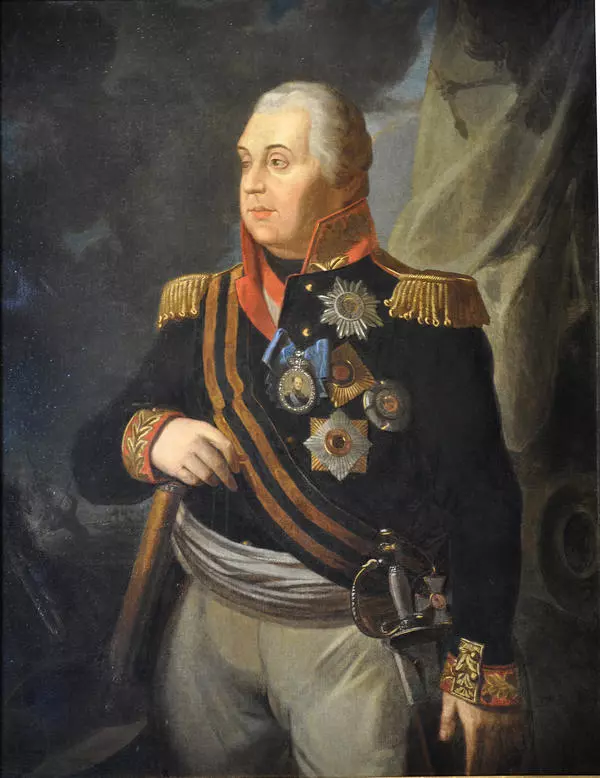Mikhail Illarionovich Golenishchev-Kutuzov came from an ancient noble family. He was the son of senator and lieutenant general Illarion Matveyevich Golenishchev-Kutuzov. After graduating from the Artillery and Engineering School in 1761, he was promoted to ensign and assigned to the Engineering Corps.
In 1764 and 1769 he participated in military operations in the Polish-Lithuanian Commonwealth. In 1770, Mikhail Kutuzov was awarded the rank of prime major for his efforts in the battles with the Turks at the Ryaba Mogila, Larga and Cahul, and the rank of lieutenant colonel for the Battle at Popeshty.
In 1802, Mikhail Kutuzov was dismissed from service. However, soon, in August 1805, he was appointed Commander-in-Chief of the Russian troops, which were sent to fight the army of Napoleon I to Austria. In 1811, he led the Danube Army.
Kutuzov managed to force the Turks to surrender at Slobozia. After that, he was bestowed the honorable title of a count. On May 16, 1812, due to the signing of the Treaty of Bucharest beneficial to Russia, Kutuzov was awarded the styling of His Serene Highness Prince.
With the outbreak of the Patriotic War of 1812, Emperor Alexander I ordered Mikhail Kutuzov to manage the defense of St. Petersburg. On July 16, the nobility of the Moscow Governorate elected Kutuzov as the head of the provincial militia. Unaware of this, the next day the nobility of the St. Petersburg Governorate made the same choice.
On August 2, His Serene Highness became a member of the State Council, and six days later the emperor approved him as Commander-in-Chief of all Russian troops. After that, Kutuzov ordered to continue the retreat and look for a position for a major battle. It took place on August 26 near the village of Borodino, after which he was promoted to the rank of Field Marshal General.
The portrait of Mikhail Kutuzov was painted by Roman Maximovich Volkov in 1813, shortly before the great commander’s death. In the portrait, he appears as a victor in the Patriotic War with all the highest orders of the Russian Empire.
The artist depicted the field marshal with the left side of his face turned to the viewer, skillfully hiding his right eye. Two severe head wounds ultimately led to loss of sight in this eye. As in many lifetime images of the commander, the legendary eye patch is missing.
The portrait of Field Marshal Kutuzov became the most famous work of Roman Volkov. The artist executed it in many versions. The Borodino Museum-Reserve houses a chest-length portrait of Kutuzov.



